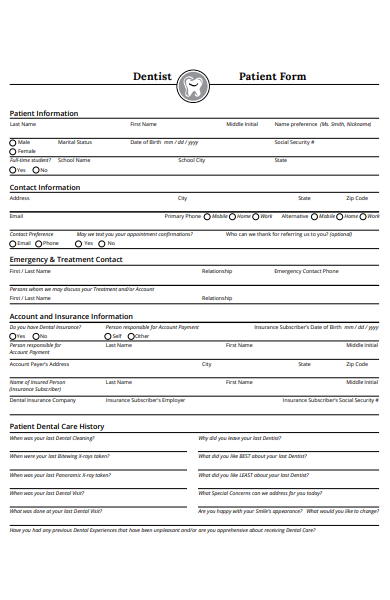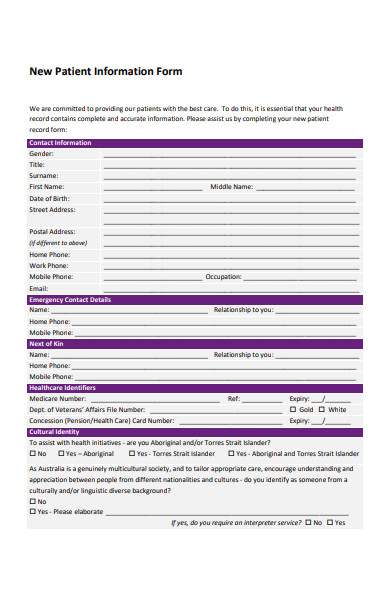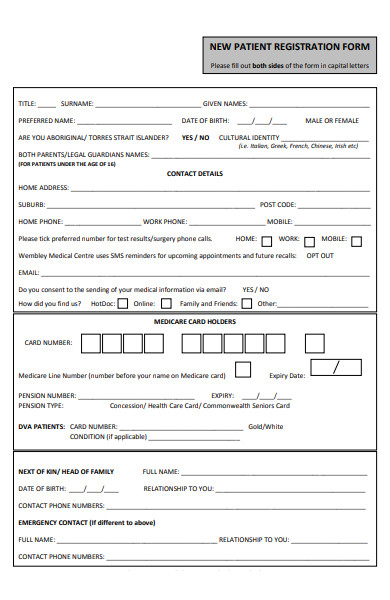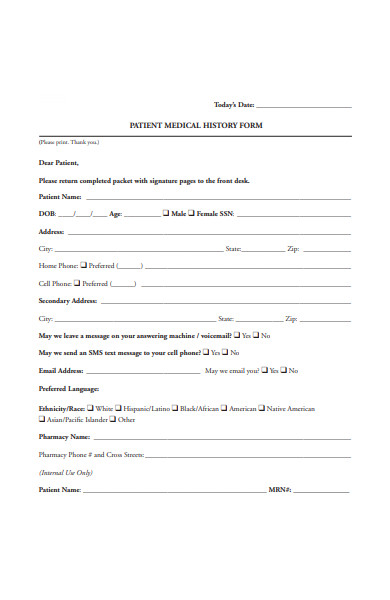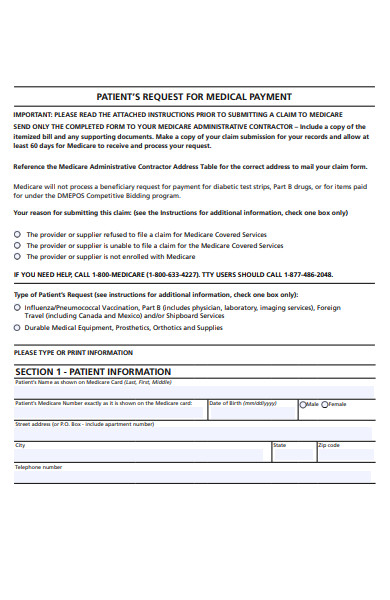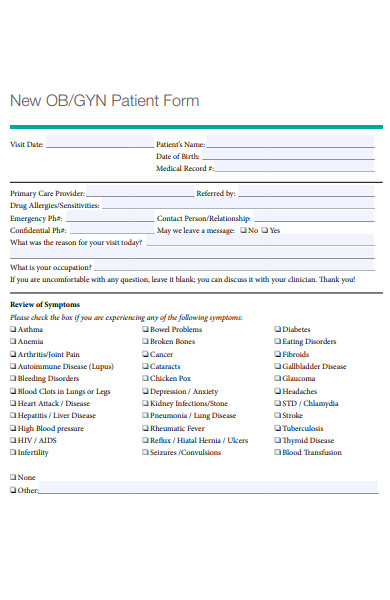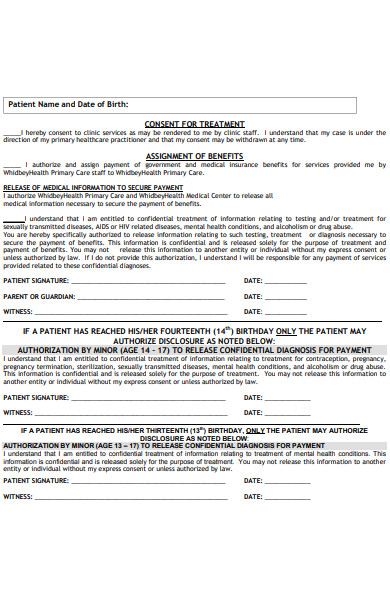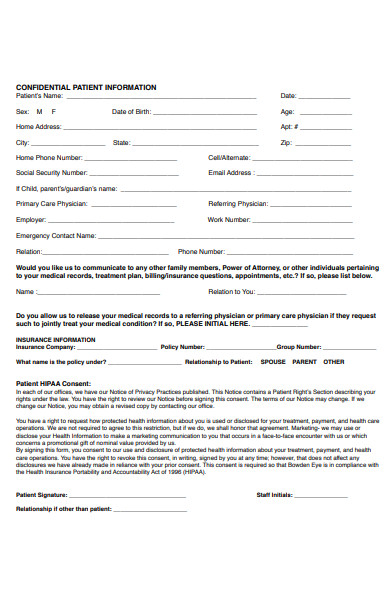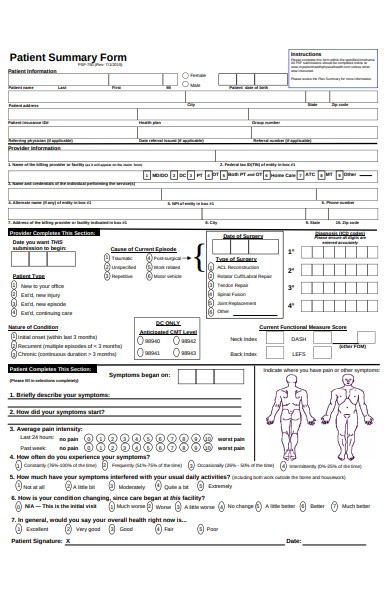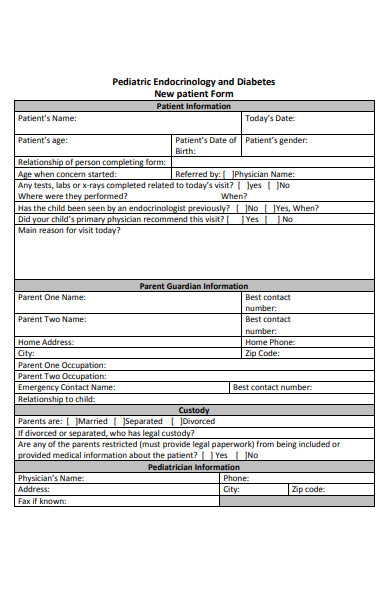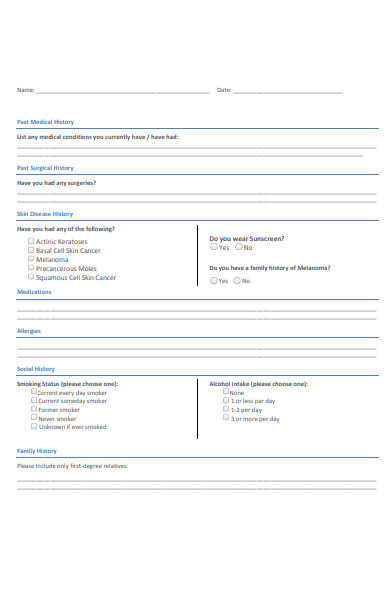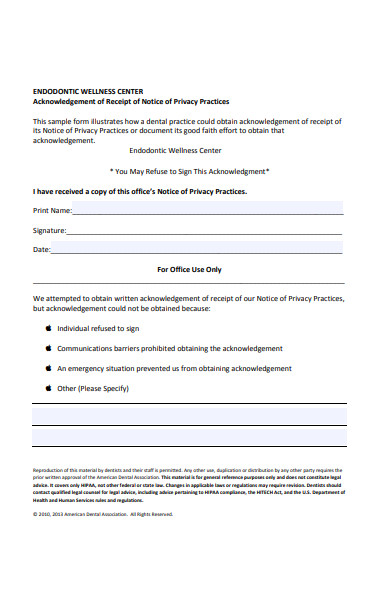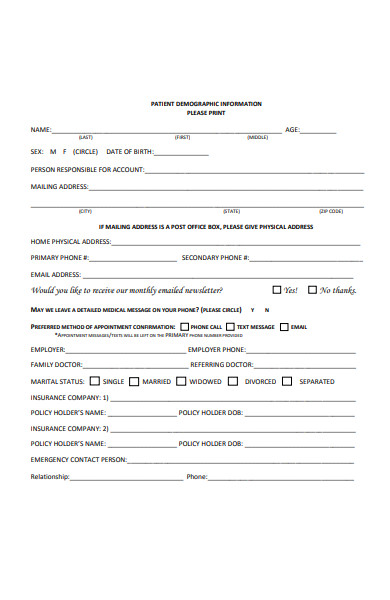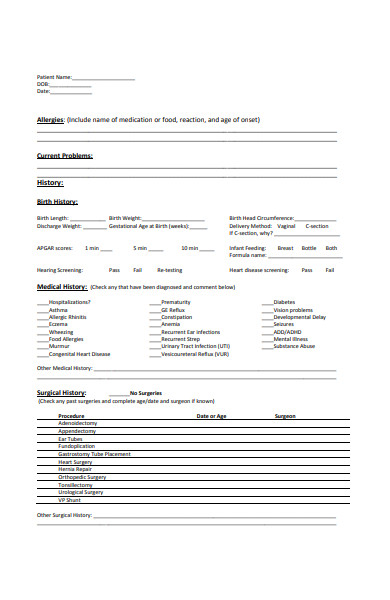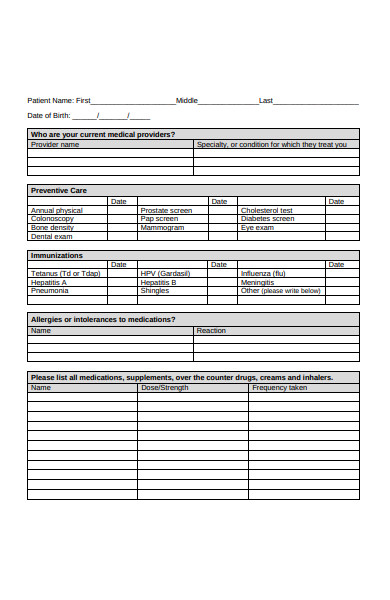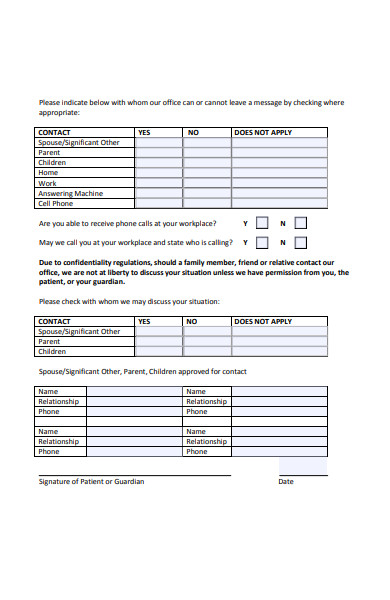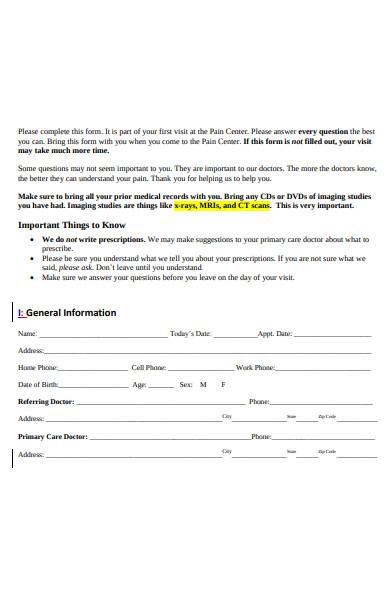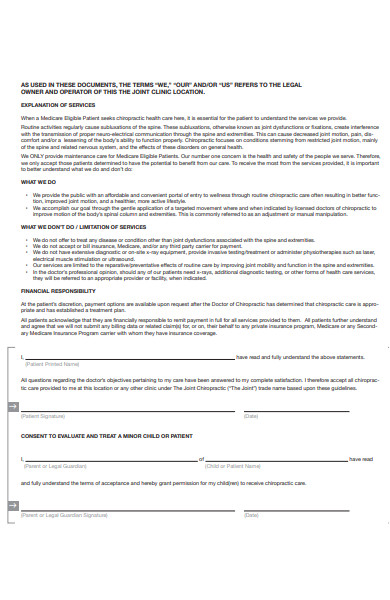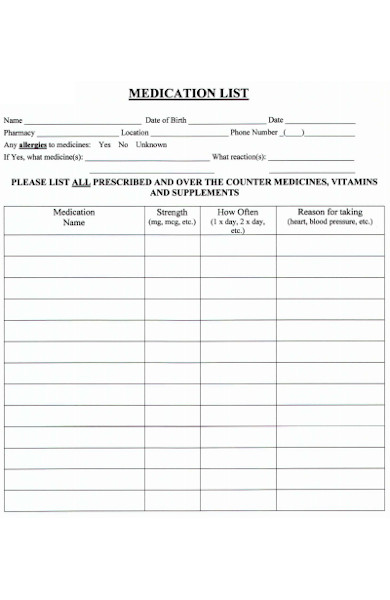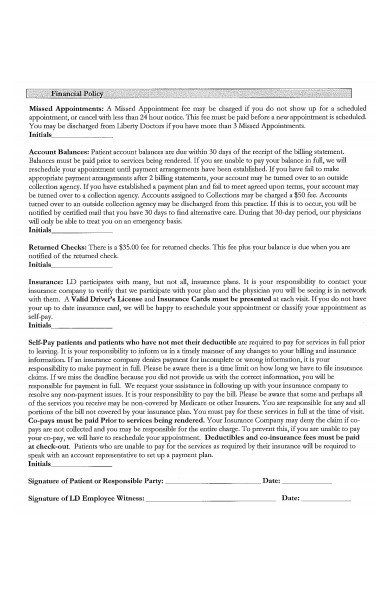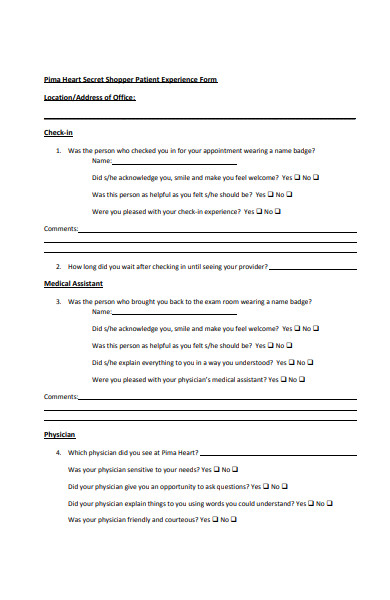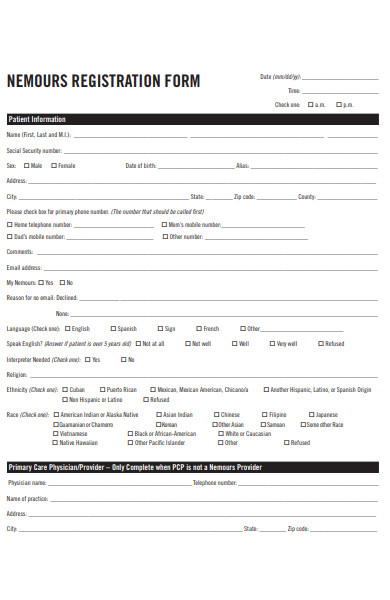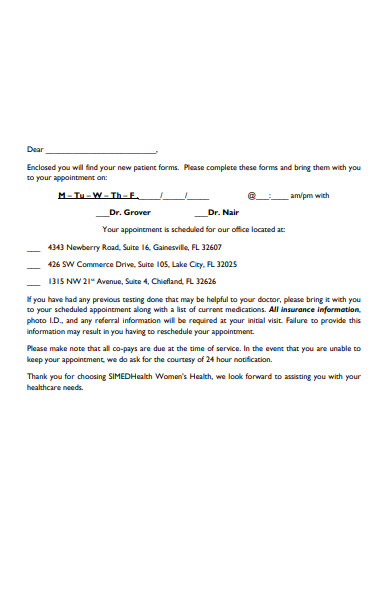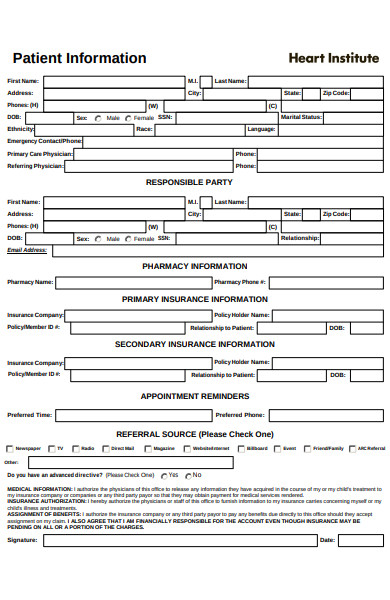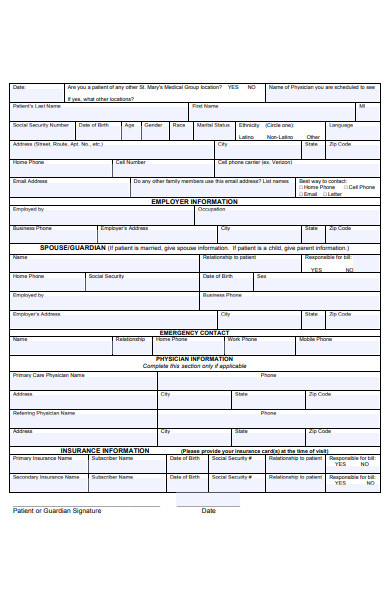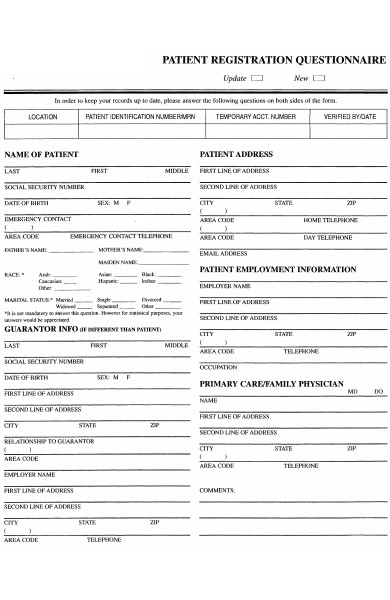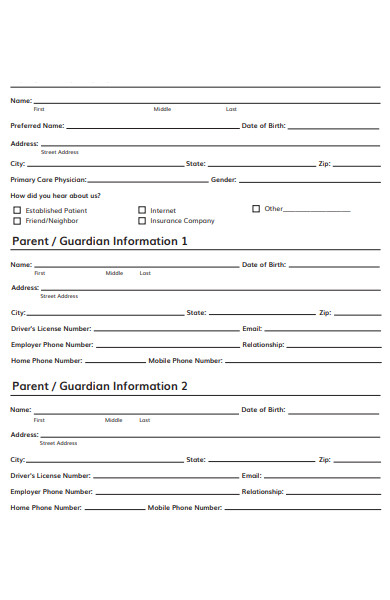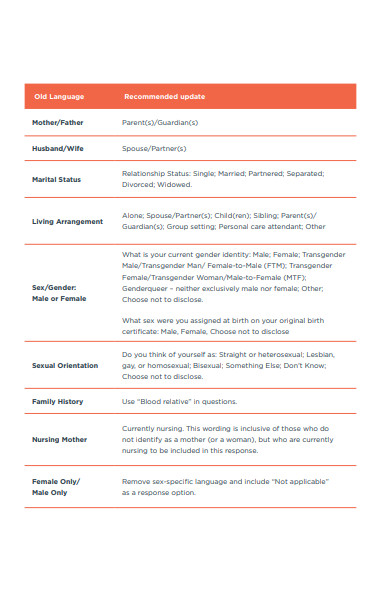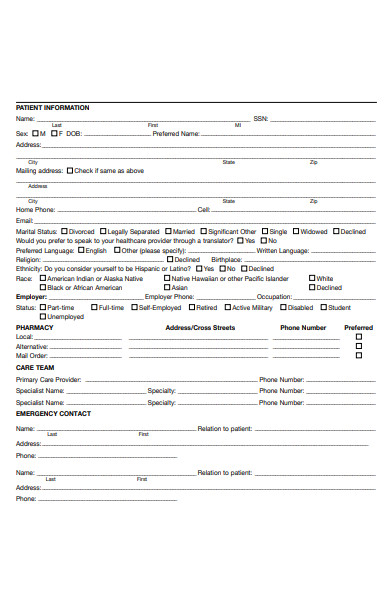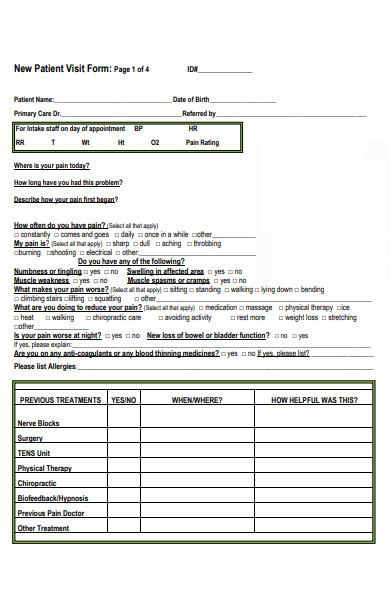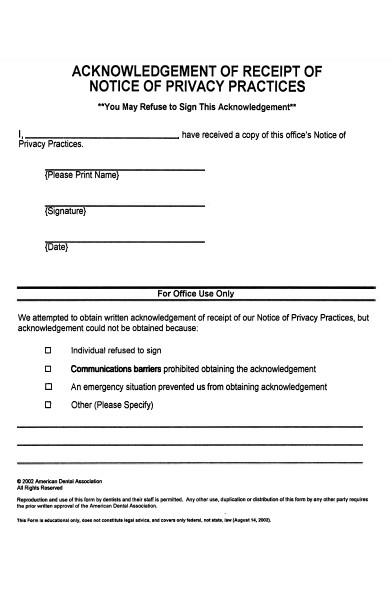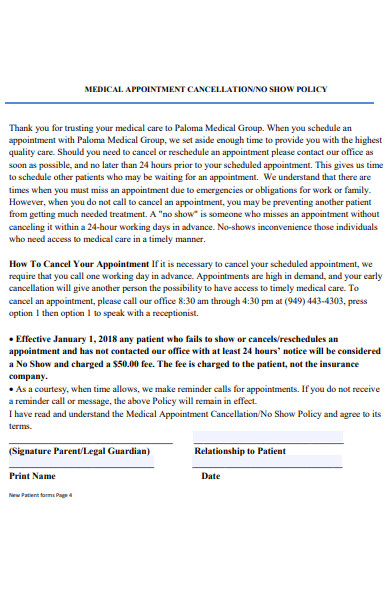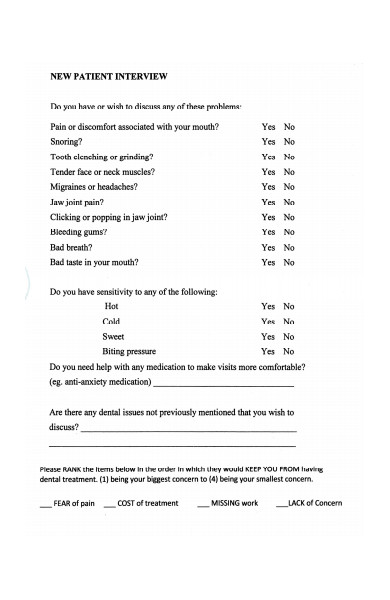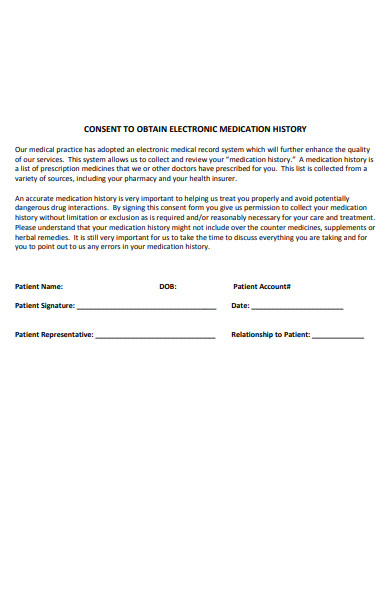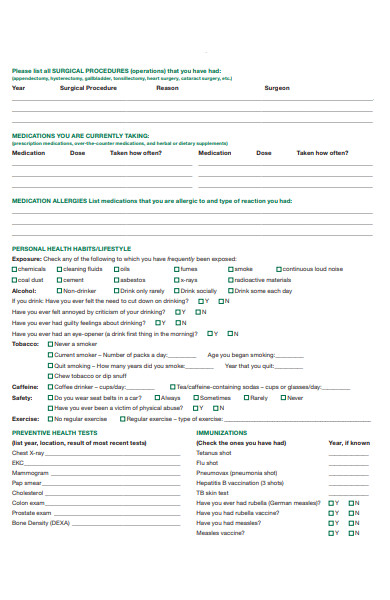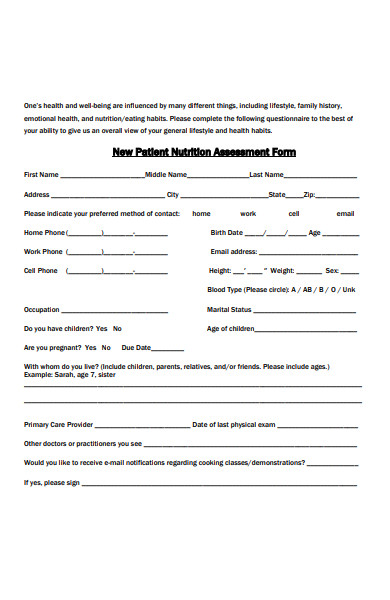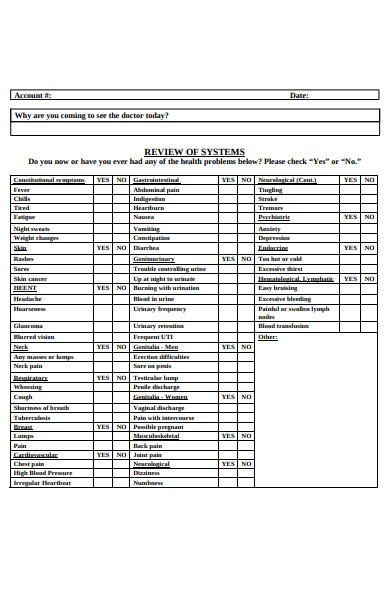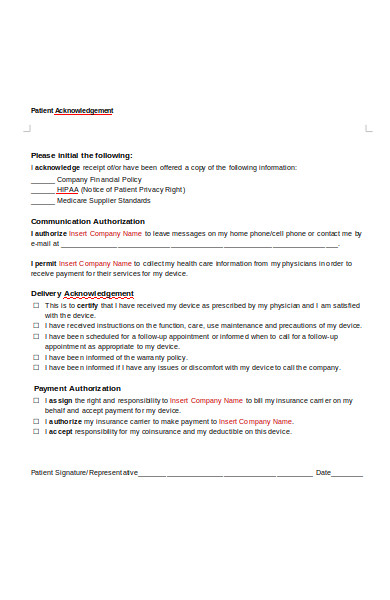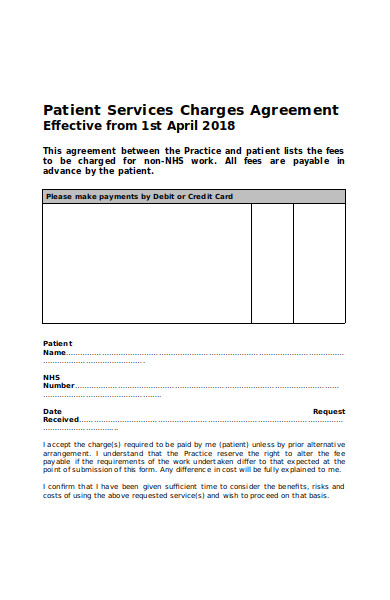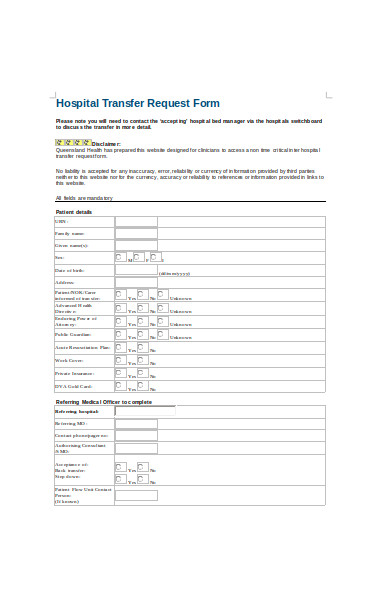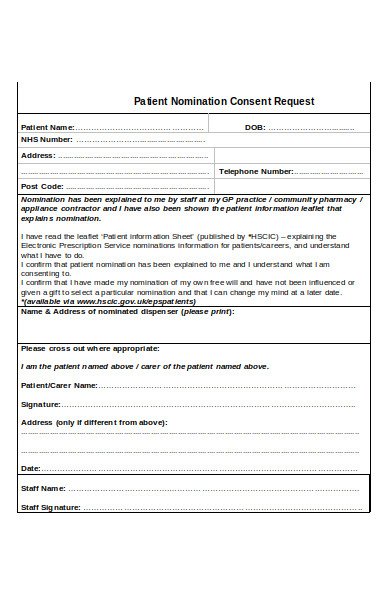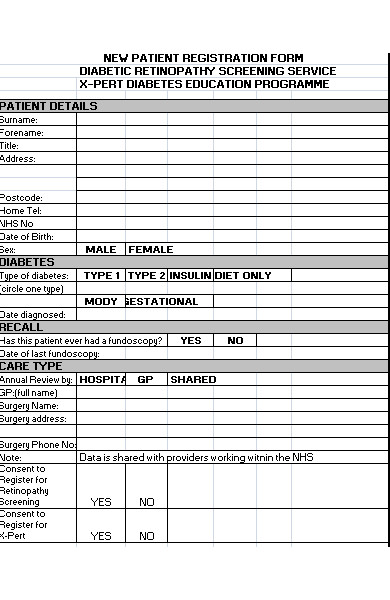The stringent smell of hospitals makes some people afraid of getting cured. This trademark smell is the aroma of iodoform, a disinfectant that keeps a hospital clean from bacteria and viruses. Others are afraid of the surgical materials, dislike seeing patients in pain, and witnessing spurts of blood in the emergency room. Perhaps the last place to be is inside hospital walls.
FREE 51+ Patient Forms in PDF | MS Word | Excel
1. Dentist Patient Form
2. Patient Information Form
3. Patient Registration Form
4. Patient History Form
5. Patient Medical History Form
6. Patient Request for Medical Payment Form
7. Patient Review of Symptoms Form
8. Patient Consent and Authorization Form
9. Patient Consent for Treatment Form
10. Patient Confidential Information Form
11. Patient Summary Form
12. Diabetes Patient Form
13. Dermatology Patient Form
14. Patient Insurance Information Form
15. Patient Privacy Practice Form
16. Patient Demographic Information Form
17. Patient Special Surgery Form
18. Children Patient Pediatrics Form
19. Patient Medical Form
20. Patient Contact Form
21. Patient Pain Consultation Form
22. Medicare Patient Eligibility Form
23. Patient Medication List Form
24. Patient Financial Policy Form
25. Patient Experience Form
26. Patient Nemours Registration Form
27. Patient Appointment Form
28. Patient Preference Communication Form
29. Patient Wellness Form
30. Patient Heart Institute Form
31. Patient Registry Identification Card Form
32. Employer Patient Form
33. Patient Questionnaire Form
34. Patient Guardian Form
35. Patient Dental Health Questionnaire Form
36. Patient Update Form
37. Patient Physician Form
38. Patient Amendment Form
39. Patient Visit Form
40. Patient Disclosure Form
41. Patient Appointment Cancellation Form
42. Patient Interview Form
43. Patient Electronic Medication Form
44. Patient Surgical Procedure Form
45. Patient Nutrition Assessment Form
46. Patient Review of System Form
47. Patient Acknowledgement Form
48. Patient Service Effective Form
49. Patient Hospital Transfer Request Form
50. Patient Images Request Form
51. Patient Nomination Consent Form
52. New Patient Form
Why Patients Need A Patient Form?
When you’re sick, the pain you feel needs a cure. Aside from some medical-related phobias, the countless forms you fill in once you arrive at the hospital is additional pain. Believe it or not, patient forms have a great impact on your overall experience in a hospital. Lack of information in the history of your medical records can result in the wrong diagnosis. Instead of curing the source of your disease, only the complications were in the target prescriptions by the doctor.
Medical information from a patient distinguished which diseases are the source and which are merely complications. Because we belong in an era of digital technology, some medical information is accessible in mobile devices and can quickly transfer from one medical provider to another. Because of this innovation, you only have to register as a patient, and the hospital personnel can update it from time to time.
In or Out: Classification of Patient Forms
Being admitted to a hospital is not the only determining factor that you are a patient. For as long as you are receiving healing treatment and physical body analysis, healthcare professionals consider you as a patient. The jargon in the medical field may be complicated, but here are simple terminologies that confuse most people.
-
Outpatient Services
The prefix out is a clue. This term means that you are not within the premises of the hospital for an overnight or so. Most of these services require only a few hours after the test results are out. It costs less because you don’t have to pay for hospitalization fees; however, services under this category have limitations in the field of wellness and prevention, diagnosis, analysis, and rehabilitation. Serious medical illnesses are not part of the services in outpatient. Some examples include a stool test, urinalysis examination, blood count, and x-ray. Patient forms under outpatient services don’t require a medical history, but instead, a doctor’s referral will do.
-
Inpatient Services
In severe cases, a patient needs hospital care. Staying in a hospital is an example of inpatient services wherein a patient must stay overnight to recover. It sure can cost a lot because you pay for the room, the examination results, the doctor, and the prescribed medications. Aside from that, you may feel uncomfortable sleeping in a hospital bed. Instances, where you need surgery with doctor’s note for admission to a hospital, require an overnight stay. Before the process, you should indicate medical history to avoid complications during the surgical operation. The approval of a doctor is a factor of consideration to consider for inpatient services.
The Truth Behind Nosocomephobia: What Do I Fear?
Upon hearing the word hospital, what comes into your mind? Do you think immediately of the sharp needles that can suck blood from your veins? Or do you feel uncomfortable thinking how the space in computed tomography scans is too small for you? There are countless reasons to fear hospitals—or technically called nosocomephobia. All the more, this fear is closely associated with other medical phobias that are more specific. Some only exhibit nosocomephobia, but a lot have their fear rooted in certain things or concepts easily triggered inside a hospital.
Ever wonder why medical personnel usually wear white? If we look back in history, doctors wear black coats. The problem is that black coats made them look like the grim reaper. Aside from that, they don’t look clean with a black-colored garment. The change from black to white made doctors appeal cleaner and safer with their coats. Their look immediately builds that trust between patient to doctor. This effect does not apply to all, especially for a person with a fear of doctors called iatrophobia.
A lot of examinations involve a person’s blood to determine any unusual presence of prohibited substances or low amounts of blood components essential for normal body functioning. Most patients exhibit the fear of blood and fear of needles, especially during the extraction process. Young kids would usually cry after a syringe pierce their skin. Fortunately, as you grow old, you can overcome this fear slowly. It is essential to do so.
Admitting that you are a patient is quite a horrendous thought for people with the fears as mentioned earlier. It may be difficult even more to fill in a patient form. Once these fears do not interfere with a person’s mindset, perhaps sharing medical-related information becomes a lot easier that helps the hospital personnel in tracking your progress.
How To Craft Patient Forms?
The hospital is one of the least liked places on Earth. The all-white interior and quiet surroundings make the hospital room as an uncomfortable accommodation for a sick person. A satirical website even pointed out that a hospital is a place where they provide beds but would not let you sleep. Perhaps, you share the same sentiments with these people. It is normal to feel uneasy as a patient in a hospital.
Furthermore, some psychological studies suggest that extreme isolation and deprivation of sensory abilities can significantly impose permanent brain damage. In cases of long-stay hospitalization, some patients experience hospital delirium in which there is confusion on the patient’s end between reality and imaginary sensations. If not treated with care, a patient may not recover at all. That is why we visit a sick friend not only to check the condition but also being his or her support system. Thus, these scenarios tell us implicitly how important patient forms are in understanding the patient.
Step 1: Always Start Asking From the Pool of Basic Information
In making the patient form, start with personal information that identifies the person as different from any other species on the planet. Because this form relates to health, a person’s height, weight, and blood type should be part of the necessary information as well. The specific medical insurance provider of the patient must have a separate space to fill in. The pool of basic information constitutes the introduction part if we relate such form to a research study. It is important to understand which details are necessary.
Step 2: Let the Patient Remember History of Medical Illnesses
As quoted by John Sedgwick, “When you study history, you’re really studying yourself.” By doing so, you can anticipate body reactions that would make you understand the things that can trigger you. The best example would be the case of allergies. You noticed that every time you eat seafood, you get tiny red dots on your skin and, ultimately, aggravating your tendency to scratch it over and over again. Even without a doctor’s prescription, you would typically stay away from eating seafood because of allergic reactions. In your next food trip, you ban seafood from entering your mouth anymore.
Similarly, nurses and doctors would ask your medical history of illnesses because it makes their assessments more accurate. A person with diabetes has a greater tendency to develop heart disease and stroke. If the diagnosis of diabetes happened three years ago, and his or her current condition’s test results showed a heart disease problem, then medical practitioners assumed this as a complication already. In this way, they will know the root of the problem.
Therefore, the medical history is an essential part of the form. Most patient forms would utilize a list and check method for determining the history of common diseases. Additional questions include surgical operations and the date of last menstruation for women.
Step 3: Consider the Emergency Contacts Section
Aside from medical history, emergency contacts section should be a priority. A patient in a hospital with an unstable health condition can have worst-case scenarios anytime. The first person to call should come from emergency contacts. It can be the patient’s parents, siblings, cousins, close relatives, or a trusted friend. At times of near death, the loved ones of a patient can either give a patient the strength to fight or grant a patient peace to eternal rest. The most common details asked from the emergency contacts are the name, relationship to the patient, and contact number.
Step 4: Ensure the Patient of Protecting His or Her Data from Perpetrators
The confidentiality agreement stated in patient forms is a critical statement in the form because this explains the accountability of healthcare personnel regarding the privacy of medical records. At the end of the document, there must be an agreement that declares the utmost security of the patient’s data as supported by the Privacy Rule of the Health Insurance Portability and Accountability Act of 1996. Of course, nobody would want his or her medical history broadcasted on social media sites.
Step 5: Allot Space for Doctor’s Comments and Suggestions
A patient form should have space for doctor’s remarks to emphasize the condition of the patient. These notes are helpful for other medical personnel to assist the needs of the patient, like the nurses and midwives. In most of your stay in a hospital, nurses are the personnel assigned to check your status every interval.
American essayist and poet, Ralph Waldo Emerson, is an excellent source of inspiration for motivating people in their daily life struggles. One of his famous quotes, “The first wealth is health,” briefly orients us how important healthcare is. We may fear hospitals, needles, blood, or whatever inside the facility, but medical practitioners are there to save lives. However, they do not hold the fate of life. Some diseases remain incurable and beyond their power to alleviate pain. There’s a certain reason why the last place to be is within hospital walls.
Related Posts
FREE 8+ Sample Patient Health Questionnaire Forms in PDF DOC
FREE 12+ Nutrition Assessment Forms in WORD PDF
FREE 9+ Health Consent Form in Sample, Example, Format
FREE 7+ Sample Dental Examination Forms PDF
FREE 10+ Feedback Forms for Nursing PDF
FREE 8+ Medical Waiver Forms in Samples, Examples, Formats
FREE 9+ Sample Patient Satisfaction Questionnaire Forms in PDF ...
What is Medical Consent Form
Patient Registration Form Samples
FREE 6+ Patient Satisfaction Questionnaire Forms Samples ...
FREE 8+ Botox Consent Forms in PDF DOC
FREE 10+ Pediatric Intake Forms PDF
FREE 7+ Sample Medical Referral Forms PDF
FREE 5+ Physical Therapy Intake Forms in PDF DOC
FREE 8+Health Questionnaire Form in Sample, Example, Format

